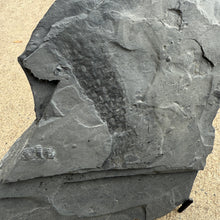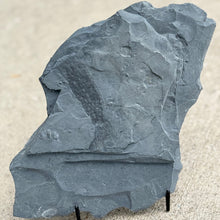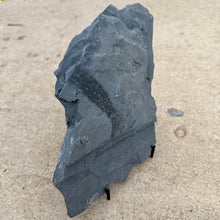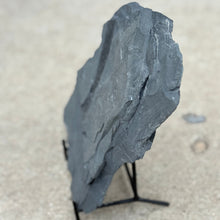
Excellent example of an authentic fossilized algae specimen Margaretia dorus.
Age: Middle Cambrian (521 to 497 mya)
Species Name: Margaretia dorus
Locality: Wheeler Shale, Millard County, Utah
Size: Approximately 7" x 8" shale piece with a 3 1/2" x 7/8" specimen.
Comes with stand
Most collected Margaretia are not this detailed and have an orange-red coloration due to high iron content which most often causes a lack of clear distinct patterning as in this nice dark-grey example found without iron staining and degradation making it much more rare.
The classification of fossilized Margaretia dorus has evolved through the years. This Cambrian fossil was originally thought to be a alcyonarian coral, later it was classified as Margaretia dorus, a green algae having approximately 10 cm fronds and covered with a range of parallel oval holes. More recently it has been classified as an organic tube holding a type of a worm called Oesia disjuncta, a hemichordate worm of the class Enteropneusta. At The Bug House, we sustain that Margaretia is an algae, and we find it far more probable the fossil has shown an early example of symbiosis with these rare worm finds. Although excellent specimens of Margaretia found in the Wheeler Shale are a more rare find, of these rare finds, there has been only one specimen found that we are aware of, showing any indication of an association with a hemichordate worm.













